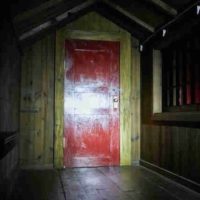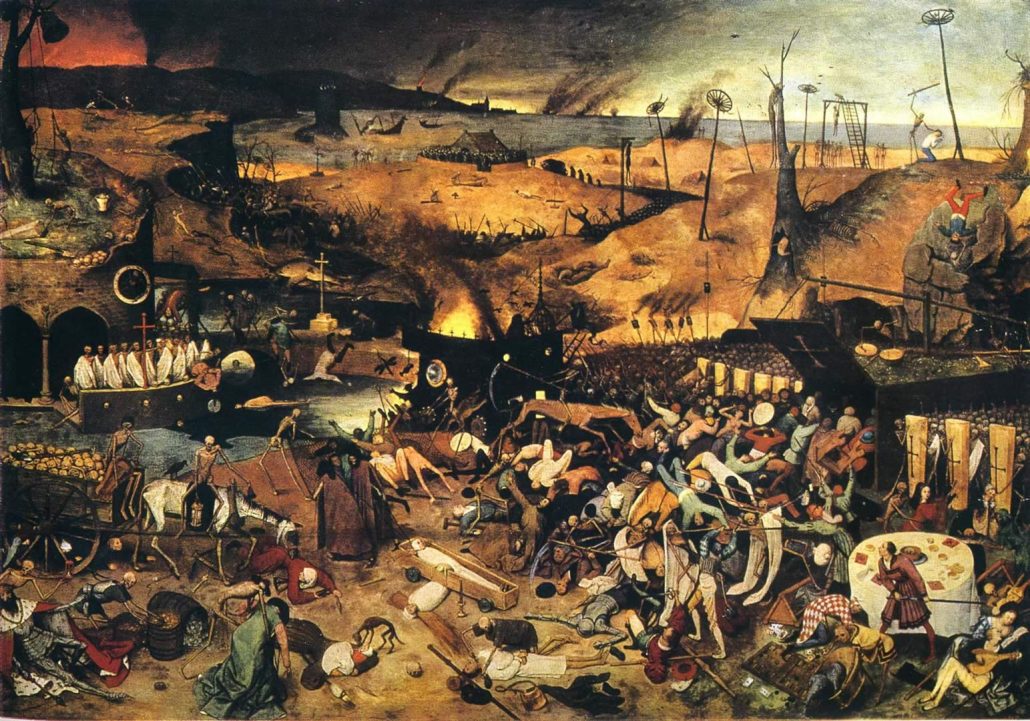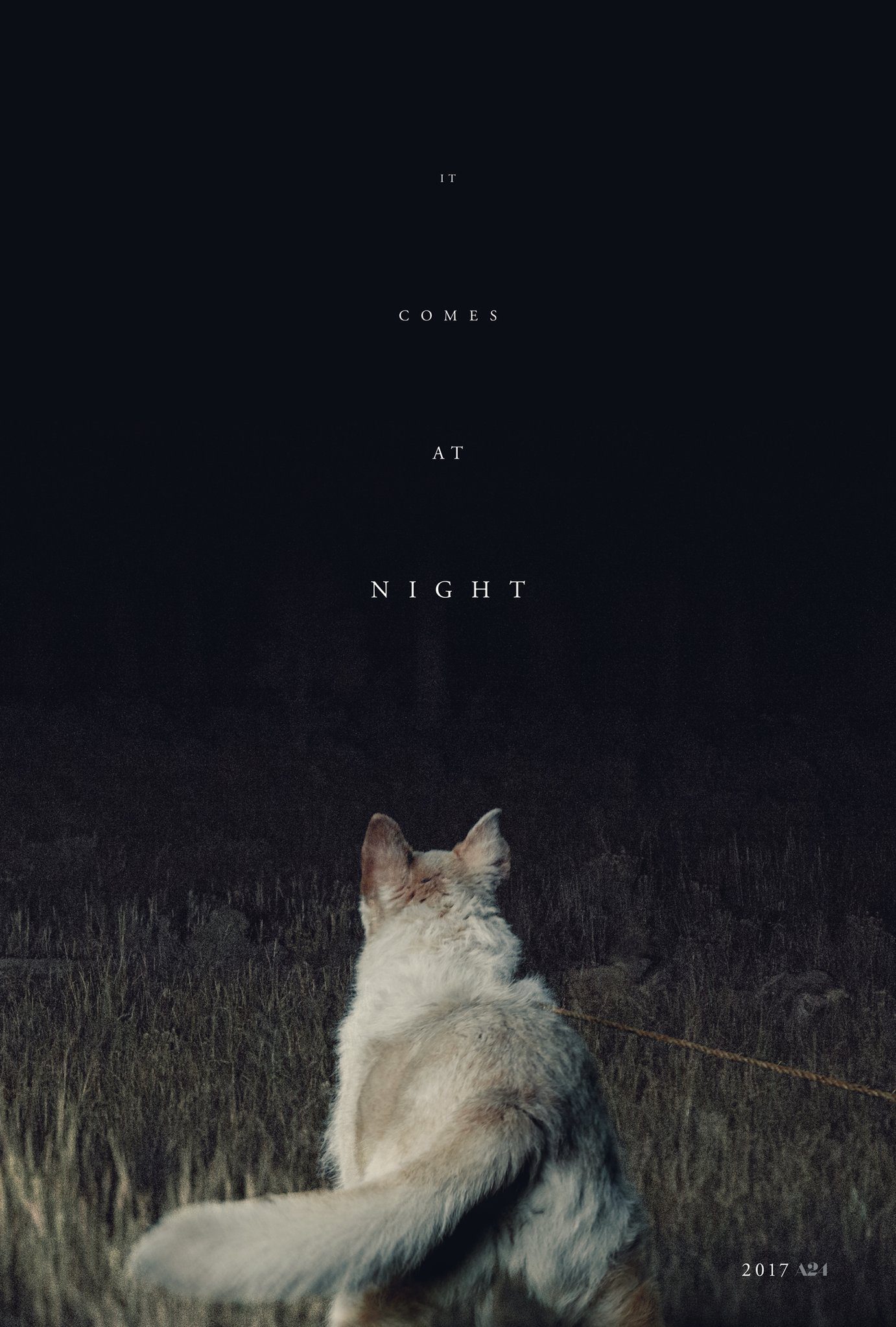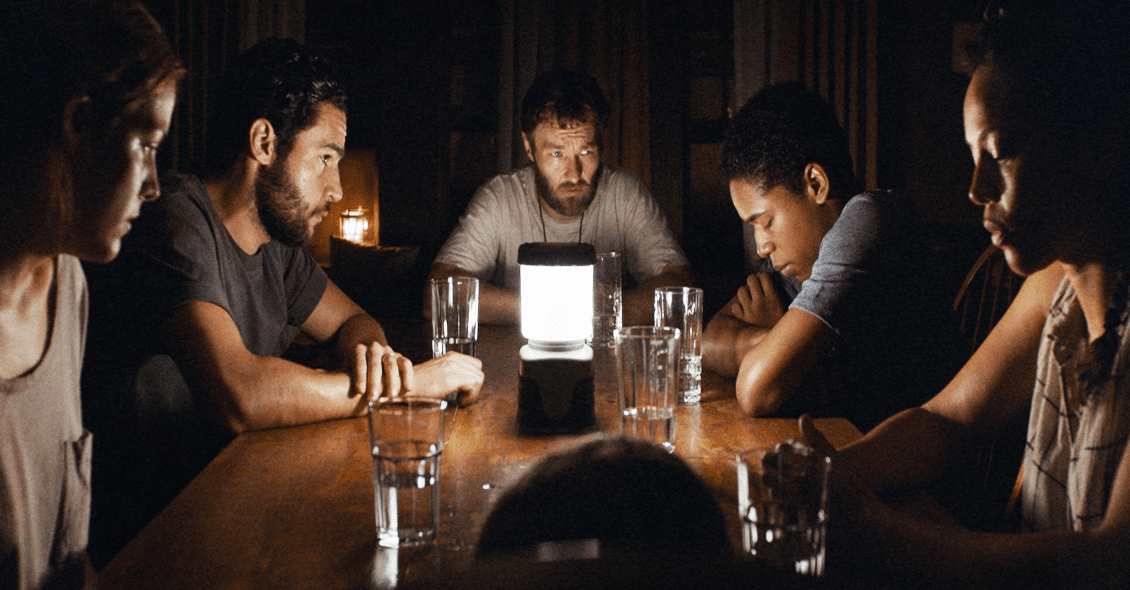Not a lot of Second Amendment humor enters my field of vision, but I am aware that some gun enthusiasts are amused by the uptick in gun ownership (and other survivalist measures) among liberals of late. I’ve certainly thought about buying a gun, and not just because thirty percent of the country still insists the president is wearing clothes. Food and resource distribution logistics are so web-based these days that a natural disaster or act of sabotage could leave us very suddenly isolated. In nightmares I drive to my local Kroger and see a sign on its locked door that reads The center did not hold, and I realize that I have to straightaway become a very different person. This fragility of civilization, and the thinness of circumstances that keep us as humans civilized, are the central themes of Trey Edward Shults’s new film, It Comes at Night, which itself arrives at a heightened moment of apocalyptic political fears.
The plot is simple. Paul, Sarah, and their seventeen-year-old son Travis—portrayed by Joel Edgerton, Carmen Ejogo, and Kelvin Harrison Jr., respectively—are living in a boarded-up house in the woods as an unknown terror ravages the outside world. The stakes of the threat, and the lengths Paul will go to in order to protect his family, are immediately made clear through the film’s in media res opening: Paul kills his infected father-in-law (David Pendleton) and burns his body in the forest.
Reminiscent of Robert Wise’s 1963 The Haunting, much of the film’s tension is focused around a door and what might be on the other side of it. Red and shiny as an apple in a Grimm Brothers’ fairy tale, this door is the house’s only access to the outside world—and vice versa. An umbilical hallway with a canted ceiling leads to it. On one wall are framed family photographs, a symbol of stability; on the opposite, a Hieronymus Bosch hellscape stares down the situated faces, a promise of what’s to come.
When the family is woken up one night by a man with a gun attempting to break down the red door, their fragile sanctuary is put in jeopardy. One of the film’s biggest achievements is its portrayal of a rage that’s at least half rational, clinging to civility. Even as Paul and this invader nearly murder each other, their attempts to come to terms are thoughtful and measured. “My family’s all that matters to me,” the man with the gun, Will (Christopher Abbott), tells Paul. “You understand that—you’re a good person.” Paul, characterized throughout as suspicious and risk-averse, is finally convinced to let the man and his family—wife Kim (Riley Keough) and young child Andrew (Griffin Robert Faulkner)—share their food and shelter. A montage of Will’s family acclimating to their new home, set to a rare upbeat, Philip Glass-esque moment in composer Brian McComber’s strong score, seems to bode well for the two families’ cohabitation. Then, a dog named Stanley chases an unseen threat into the dark forest.
It Comes At Night has so many situations and themes in common with another A24 horror release, last year’s The Witch, that it’s hard to believe the two films only share a production company rather than a writer/director: the forest as a place of menace, horror set against nascent teen sexuality, children eavesdropping on adult conversations through walls, the exile of a family from society, the inability to hold that family together in the face of outside invasion, lots of wood chopping, and even a creepy goat (the same goat, in fact, that played Black Phillip in The Witch). It Comes At Night is the contemporary, secular counterpart to The Witch’s Puritan setting. The more significant difference, however, involves how the two films end; whereas The Witch assures viewers in its final minutes that it was simply a movie about scary witches all along, It Comes at Night never shows its hand. Both films are claustrophobic, but the latter even more so, in that we’re supplied with fewer tools to reconstruct the larger world for ourselves. Although we leave the film knowing that the household is infected, we’re still unsure about the nature of the disease. Is it manmade? Are there supernatural aspects? Has it spread across the whole planet? And what exactly did the dog tangle with in the woods?
This difference makes It Comes at Night the superior film in my mind, the ultimate ambiguity of the menace that’s highlighted by the algebraic variable of the title’s “It.” A comparison to Stephen King’s clown tome, soon to receive its second screen treatment, is somehow appropriate here. That book’s villain is not a clown—nor a cloud, a werewolf, a mummy, a spider, or any of the other forms it assumes over the course of 1,000+ pages. Rather, it’s an amorphous, malignant evil that takes the form of whatever its victims most fear. So, what is the it that comes at night? A disease, sure, but a family searching for water as well. Above all, though, it’s the fear and suspicion and savageness that find in this film’s breakdown of civilization a fertile ground for the real horror that humans inflict on themselves and others when they’re reduced to nothing more than a very smart and dangerous species of animal. “Have you ever seen people when they get desperate?” Paul asks his son, the film’s most chilling line.
“It” does not even “come” in the traditional sense. These primal, atavistic qualities are with us all the time, lying dormant until the right situation coaxes them forth. The “night” of the title is thus likewise variable. It could be wartime or famine, natural disasters or disease, suddenly finding your life or the life of a loved one in danger—and millennia of evolution is undone in an instant. Some of us are lucky enough to go our whole lives with only glimpses of what such a transformation might look like. Whether it’s fear mongering or preparation for real global danger, the post-apocalyptic bent of both the daily news and so much contemporary storytelling is giving us more than a glimpse of dark nights these days.
From a writer’s standpoint, I don’t often hear critics examining this trend’s larger ramifications. Is our glut of post-apocalyptic art simply an innocuous reflection of current fears, or do its cautionary aspects have the capacity to swerve humanity from the brink of extinction? Could it, on the other hand, even be contributing in some way to coming catastrophes? If these questions are even answerable, they would need to be addressed on a case-by-case basis, but I don’t think it’s ridiculous to speculate about the possibility that post-apocalyptic art could in fact be speeding the apocalypse. Sigmund Freud, after all, did consider the death instinct an essential human compulsion dooming the Eros that builds contemporary civilization. We tend to search for expressions of this death drive only in obvious sources of degradation—particularly war and resource depletion—but our fascination with brutal tragedy, with at-best amoral narratives like that of It Comes at Night, could likewise be seen as outlets, our species in love with its own destruction. This train of thought takes me dangerously close to Platonic ideas of censorship (I prefer Aristotle’s notion that plot is both instinctual and rational), but at least airing this hazard in the case of such a brutal film in such a scary time still strikes me as healthy and productive.
Films with shitty messages are always the first to claim they don’t have a message—but that doesn’t negate the human brain’s tendency to conjure a takeaway when subjected to two hours of nihilistic despair like It Comes at Night. And this film’s takeaway is undoubtedly a shitty one: empathy endangers. It’s specifically the acts of human goodness in this film that lead to the family’s destruction, three in particular: aiding a starving family, caring for an orphaned dog, and Travis taking the hand of a sleepwalking child and leading him back to safety. (As in Dracula, falling asleep in another part of the castle is a bad idea.) What keeps the family safe—isolationism, distrust, and murder—are reckless measures to promote in today’s world. While I do not doubt that the filmmakers would deny that this is the film’s goal, such conclusions are nevertheless bluntly available.
It seems like a throwaway bit of character building when Paul, in a bonding session over precious bourbon with Will, mentions that he was a teacher of Roman history before circumstances forced him into survivalist mode. But it was a telling detail, inflecting the film with a cycle of civilizational collapse. Echoing in my head the entire time was the Washington Post’s dire, Trump-era motto, “Democracy Dies in Darkness.” Just as Will’s previous training in the more utilitarian skills of construction and auto maintenance could not save his family when they ran out of water, so is Paul’s knowledge of what led to the fall of the Roman Empire useless in turning his contemporary society away from the same fate.
***
Image credits: feature image, image 2, image 3, image 4.







